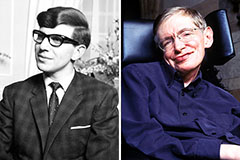Widened Coverage, Same Exceptional Quality
Renowned for its dedication to excellence, MyCigarsASAP.com supplies an exclusive assortment of premium cigars from the most prominent brands in the industry. By broadening its reach to West Hollywood, the company keeps offering immediate access to a wide selection of luxury cigars, continuing the same exceptional quality control that has made it a favorite among cigar lovers.
Cigar Delivery West Hollywood
CALL (800) 654-7959
Cigar enthusiasts in West Hollywood can select from popular brands including: • Arturo Fuente – Supplying a wide collection of precisely made cigars. • Montecristo – Celebrated for its refined, harmonious combinations that meet a variety of tastes. • Cohiba – Famous around the globe for offering a intense, vigorous smoking experience. • Davidoff – A hallmark of refinement, supplying cigars of exceptional consistency and quality. • My Father's Cigars – Bringing bold, rich tastes that are influenced by Cuban cigar legacy. • Ashton – Renowned for its silky, elegant flavor, made from the best Dominican tobacco leaves. • Padron – Esteemed for its full-bodied flavors and expert artistry, including the highly prized 1964 Anniversary Series. • Romeo y Julieta – A perennial choice renowned for its harmonious tastes and consistent quality.
This diverse selection assures that MyCigarsASAP.com serves a wide variety of preferences, with cigars procured from well-known regions like Nicaragua, the Dominican Republic, and Honduras.
Emphasis on Freshness and Quality
Grade is at the center of MyCigarsASAP.com’s activities. To make certain every cigar arrives in ideal condition, the company adopts strict quality control standards, including humidity-controlled storage and individually picked inventory. Every purchase is dealt with cautiously, guaranteeing that the cigars are provided fresh and rich in taste. Also, their team of cigar experts is on hand to give personal advice, making sure every customer's experience is both personalized and informative.
Fast and Convenient Delivery to West Hollywood
With this recent service growth, MyCigarsASAP.com affirms its position as one of the swiftest premium cigar delivery services in the region. Whether for a instant celebration, a set occasion, or a tranquil night of rest, community members in West Hollywood can now indulge in fast cigar deliveries within 30 to 60 minutes after ordering. This rapid service introduces a greater ease to West Hollywood’s cigar enthusiasts.
Cigar Delivery West Hollywood
CALL (800) 654-7959
About MyCigarsASAP.com
MyCigarsASAP.com is a Los Angeles-headquartered cigar delivery service passionate about delivering rapid, uninterrupted access to a top-notch variety of cigars. With a dedication to quality, freshness, and personalized service, the company has developed a standing as a dependable provider for cigar aficionados in the region. Now, with augmented service to West Hollywood, MyCigarsASAP.com stays ahead in supplying premium cigars quickly and accurately.
For more data or to arrange an order for rapid delivery, call (800) 654-7959.
Cigar Inception and Past: A Trip Through Time
Cigars, often associated with splendor, practice, and workmanship, possess a vibrant legacy extending centuries. The growth of cigars demonstrates the fusion of civilizations, exploration, and trade transactions. This piece studies the compelling roots and history of cigars, tracking their voyage from indigenous traditions in the Americas to emerging as a world-spanning representation of sophistication.
The Historic Origins: Cigars in Pre-Columbian Cultures Cigars have their original beginnings in the aboriginal traditions of the Americas. Early nations, including the Mayans, Aztecs, and Taínos, are acknowledged to have partaken of wrapped tobacco greens. Historical artifacts reveal illustrations of Mayans puffing on ceramic vessels dating back to no later than the 10th century. The label “cigar” likely comes from the Mayan phrase “sikar,” which implies to smoke.
In these early societies, tobacco was not only a pleasure product but also held holy significance. Shamans and tribal leaders inhaled tobacco during ritualistic customs, holding it allowed them to communicate with the supernatural world. Tobacco was also used curatively, offering soothing for various disorders, such as headaches and digestive issues.
Tobacco’s Inception to Europe: Columbus and the New World The European history of cigars started with Christopher Columbus’s discovery in the Americas in 1492. His crew found original people enjoying twists of parched tobacco blades, an foreign practice that captivated them. Columbus and his men transported portions back to Spain, marking the inception of Europe’s affiliation with tobacco.
The practice of using quickly grew across Europe. Spaniards accepted it first, and by the 16th century, tobacco use turned into popular among European aristocrats. Early cigars were primitive compared to modern versions, but their draw moved to Italy, Portugal, and France. Tobacco was also viewed as a panacea, considered to heal a range of sicknesses from chills to exhaustion.
Cuban Influence: Birthplace of the Modern Cigar Cuba’s role in cigar chronicle is essential, changing tobacco from a indigenous commodity into a planetary phenomenon. In the 17th century, Cuba emerged as the heart of cigar production due to its suitable climate and lush soil, particularly in the Vuelta Abajo region. Cuban cigars quickly earned a standing for unsurpassed quality and mastery.
By the 1800s, the Cuban cigar industry was prospering, and the term “Havana cigar” became synonymous with excellence. Adept artisans, known as torcedores, crafted cigars by hand, polishing techniques that remain largely unchanged today. Many of the world’s most celebrated cigar brands, such as Montecristo, Cohiba, and Romeo y Julieta, trace their source to this era.
The Expansion to North America and Europe The appetite for cigar s escalated beyond Cuba’s borders by the 18th and 19th centuries. Tobacco plantations commenced surfacing in other Caribbean islands, such as the Dominican Republic and Jamaica, as well as parts of Central America, including Honduras and Nicaragua. These regions continue to be cigar leaders today, each adding individual characteristics to their products.
In Europe, Spain and the Netherlands developed into prominent consumers and producers of cigars. The Dutch founded a vigorous cigar industry, importing Cuban tobacco and blending it with native leaves to form singular styles. Meanwhile, cigar smoking in the United States turned into affiliated with status and masculinity. The rise of industrialization saw cigar factories increase across the U.S., particularly in Florida, where Cuban immigrants brought their artistry and traditions.
Cigars and Social Status: From Aristocracy to the Everyday Man Throughout chronicle, cigars have been closely linked to status, wealth, and celebration. By the 19th century, cigars were a fixture among European and American aristocrats. Monarchs such as King Edward VII of England were well-known cigar lovers, further amplifying their get redirected here popularity among the elite.
In the United States, cigars became affiliated to political power and business success. Industrial magnates like Andrew Carnegie and John D. Rockefeller were often photographed inhaling cigars, solidifying their image as emblems of wealth. Prominent figures such as Winston Churchill famously accepted cigars, enhancing to their prestige.
However, cigars were not confined to the upper class. The growth of the cigar industry led to the making of economical options, making cigars obtainable to the working class. Cigar clubs and lounges developed, offering venues where people from all walks of life could indulge in a smoke.
The Cuban Embargo and the Rise of New Markets The Cuban cigar industry confronted a major turn in 1962 when the U.S. government, under President John F. Kennedy, enacted a trade embargo on Cuba. Cuban cigars, previously a staple among American cigar enthusiasts, became illegal in the U.S., creating both paucity and allure around them. As a result, many Cuban cigar makers migrated to neighboring countries like the Dominican Republic, Nicaragua, and Honduras, where they continued their skill using Cuban-seed tobacco.
This geopolitical turn unlocked new markets and assisted to the rise of premium cigars outside Cuba. Today, cigars from these regions are admired for their quality, challenging Cuban cigars in flavor, construction, and diversity.
Cigars in Popular Culture and Cinema Cigars have established their place in popular culture, often representing power, victory, and sophistication. Hollywood championed the cigar as an icon, featuring it prominently in films. Characters like Tony Montana in Scarface and Winston Churchill in The Darkest Hour copyright the link between cigars and authority.
Moreover, cigars are a staple at celebrations, marking occasions such as weddings, business deals, and the birth of children. Cigar lounges and clubs continue to serve as hangouts for socializing and networking, bolstering their cultural relevance.
The Modern Cigar Renaissance The late 20th and early 21st centuries have seen a reawakening of cigar culture. The 1990s “Cigar Boom” in the U.S. saw a reinvigorated interest in premium cigars, with new aficionados joining the scene. Mastery, diversity in blends, and custom techniques have fueled the modern cigar renaissance.
Independent cigar brands have achieved popularity, offering singular blends that draw to a developing demographic of younger smokers. Additionally, the rise of cigar lounges and online cigar shops has made it more accessible for consumers to explore different a fantastic read varieties from around the world. Events like Cigar Aficionado’s Big Smoke further illustrate the timeless allure of cigars in contemporary culture.
Cigars and Sustainability: The Future of the Industry As the cigar industry transforms, sustainability has become a focus. Environmental factors, including climate change and deforestation, alter tobacco cultivation. Many cigar manufacturers are initiating eco-friendly practices by using sustainable farming methods and supporting reforestation efforts.
Fair labor practices are also spreading, with companies ensuring fair wages and safe working conditions for the farmers and artisans involved in cigar production. The concentration on sustainability endeavors to preserve the industry’s legacy while satisfying the expectations of socially conscious consumers.
Conclusion: A Legacy of Tradition and Craftsmanship From the divine rites of indigenous tribes to the luxurious lounges of today, cigars have come a long and fabled path. Each breath of a premium cigar carries with it the legacy of generations of artistry, tradition, and cultural significance. Whether relished by royalty, industrial tycoons, or modern-day lovers, cigars continue to stand for more than just tobacco—they represent a lifestyle, a celebration, and a connection to history.
As the world of cigars evolves, one thing stays constant: the appeal of unwinding, lighting up, and appreciating the artistic combination of tradition and innovation cloaked in each leaf.
The Cigar Creation Technique: A Expedition from Past to Today
One Cigar Manufacturing Process: An Journey from Past to Present
Introduction
Such a cigar, a single timeless symbol of elegance and sophistication, has an rich history that bridges centuries and continents. From its early origins among aboriginal peoples to its modern incarnation as one global industry, the process of crafting a cigar is one blend of mastery, inquiry, and tradition. This article scrutinizes the intricate journey of cigar manufacturing, comparing the methods of the past with those of today, and highlighting how innovation and heritage coexist in this fascinating craft.
I. Historical Overview of Cigar Manufacturing
A. Early Origins of Cigars
The history of cigars traces back to the indigenous peoples of the Caribbean and Mesoamerica, who tended tobacco and used it in religious and medicinal practices. When Christopher Columbus arrived in the New World in 1492, he and his crew perceived the native Taíno people of Cuba and Hispaniola making and smoking dried tobacco leaves. This practice attracted the Europeans, who exported tobacco back to the Old World, where it quickly attained popularity.
B. Traditional Cigar-Making Techniques
1. Tobacco Cultivation
In the early days, tobacco cultivation was an manual and labor-intensive process. Farmers depended on natural cycles and traditional knowledge to grow tobacco plants. The seeds were sown by hand, and the plants required meticulous care to thrive.
2. Leaf Selection and Fermentation
After harvesting, the tobacco leaves received a natural air-curing process. They were mounted in curing barns to dry slowly, facilitating the chlorophyll to break down and the leaves to acquire their characteristic brown color. Fermentation subsequently occurred, where the leaves were stacked in piles called pilones. The natural heat generated by microbial activity attenuated harshness and accentuated the rich flavors.
3. Rolling Methods
Cigar rolling was a craft transferred through generations. Skilled artisans, known as torcedores, constructed cigars entirely by hand. They picked filler leaves, bound them with a binder leaf, and shrouded the bunch with a high-quality wrapper leaf. This meticulous process called for precision and an eye for quality.
C. The Role of Cuban Cigar Tradition
Cuba became equivalent with premium cigars due to its ideal climate and soil conditions, particularly in the Vuelta Abajo region. The country's cigar-making techniques set forth the standard for quality and craftsmanship. Cuban cigars were in high demand, and the methods developed there determined cigar production worldwide.
II. Modern Cigar Manufacturing Process
A. Advances in Tobacco Cultivation
1. Genetic Selection
Modern agriculture has adopted genetic selection to improve tobacco plant qualities. Scientists and farmers join forces to develop tobacco strains resistant to diseases and pests, and with desired flavor profiles. This generates more consistent and high-quality crops.
2. Modern Farming Techniques
Today, tobacco farming utilizes advanced irrigation systems, soil management, and crop rotation to maximize yield and quality. Precision agriculture technologies, such as GPS mapping and drones, aid monitor plant health and optimize resource use.
B. Leaf Processing Today
1. Fermentation Methods
While the fundamental principles of fermentation stay, modern facilities control temperature and humidity with greater precision. This control ensures uniformity and refines flavor development. Some producers implement multiple fermentation cycles to refine the tobacco further.
2. Aging and Storage
Post-fermentation aging has become a critical step. Tobacco leaves are aged in controlled environments, sometimes for several years, to mellow the tobacco and refine complexity. Aging rooms are equipped with technology to keep ideal conditions.
C. Contemporary Cigar Rolling
1. Machine-Made vs. Hand-Rolled Cigars
The 20th century brought in mechanization to cigar production. Machine-made cigars adopt homogenized tobacco leaf (HTL) binders and wrappers, facilitating mass production at lower costs. However, premium cigars endure to be hand-rolled, keeping the artisanal tradition.
2. Quality Control
Modern factories carry out strict quality control measures. This includes regular inspections, draw testing to verify proper airflow, and sensory evaluations. Technology enhances but does not supplant the expertise of seasoned inspectors.
D. Innovations in Packaging and Distribution
Advancements in packaging materials secure cigars from environmental factors during shipping. Vacuum-sealed packaging, humidification devices, and sophisticated distribution logistics secure cigars reach consumers in optimal condition.
III. Comparing Past and Present Methods
A. Technological Advances
Technology has streamlined many aspects of cigar manufacturing without lessening the importance of skilled labor. Mechanization performs repetitive tasks, while artisans focus on quality and craftsmanship.
B. Maintaining Tradition in a Modern Industry
Despite technological progress, the essence of cigar-making continues rooted in tradition. Many producers underscore hand-rolled methods and traditional fermentation to copyright authenticity and cater to aficionados who appreciate heritage.
C. Challenges and Opportunities
The industry encounters challenges like regulatory changes, health concerns, and market fluctuations. However, opportunities present themselves from expanding global markets, premiumization trends, and consumer interest in artisanal products.
IV. The Art of Cigar Making: Preserving Craftsmanship
A. The Role of the Torcedor (Cigar Roller)
Torcedores are revered figures in cigar factories. Their expertise influences the cigar's construction and performance. Training to become a master roller can take years, highlighting the complexity of the craft.
B. Apprenticeship and Skills Transfer
Many factories operate apprenticeship programs to transfer skills to new generations. This secures the survival of traditional techniques and preserves high standards in production.
C. Cultural Significance
Cigar-making is more than a business; it's a cultural heritage in regions like Cuba, the Dominican Republic, and Nicaragua. Festivals, museums, and tours commemorate this legacy, appealing to enthusiasts worldwide.
The cigar manufacturing process is an captivating blend of time-honored traditions and modern innovations. While technology has implemented efficiencies and consistency, the heart of cigar-making resides in the hands of skilled artisans who preserve a legacy that traverses centuries. Appreciating this journey boosts the appreciation of cigars, not just as products but as embodiments of cultural heritage and craftsmanship.
 Rider Strong Then & Now!
Rider Strong Then & Now! Ross Bagley Then & Now!
Ross Bagley Then & Now! Raquel Welch Then & Now!
Raquel Welch Then & Now! Heather Locklear Then & Now!
Heather Locklear Then & Now! Stephen Hawking Then & Now!
Stephen Hawking Then & Now!